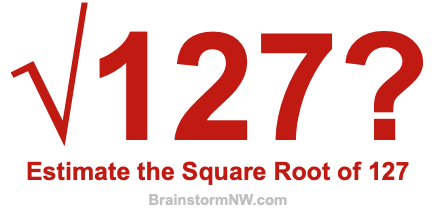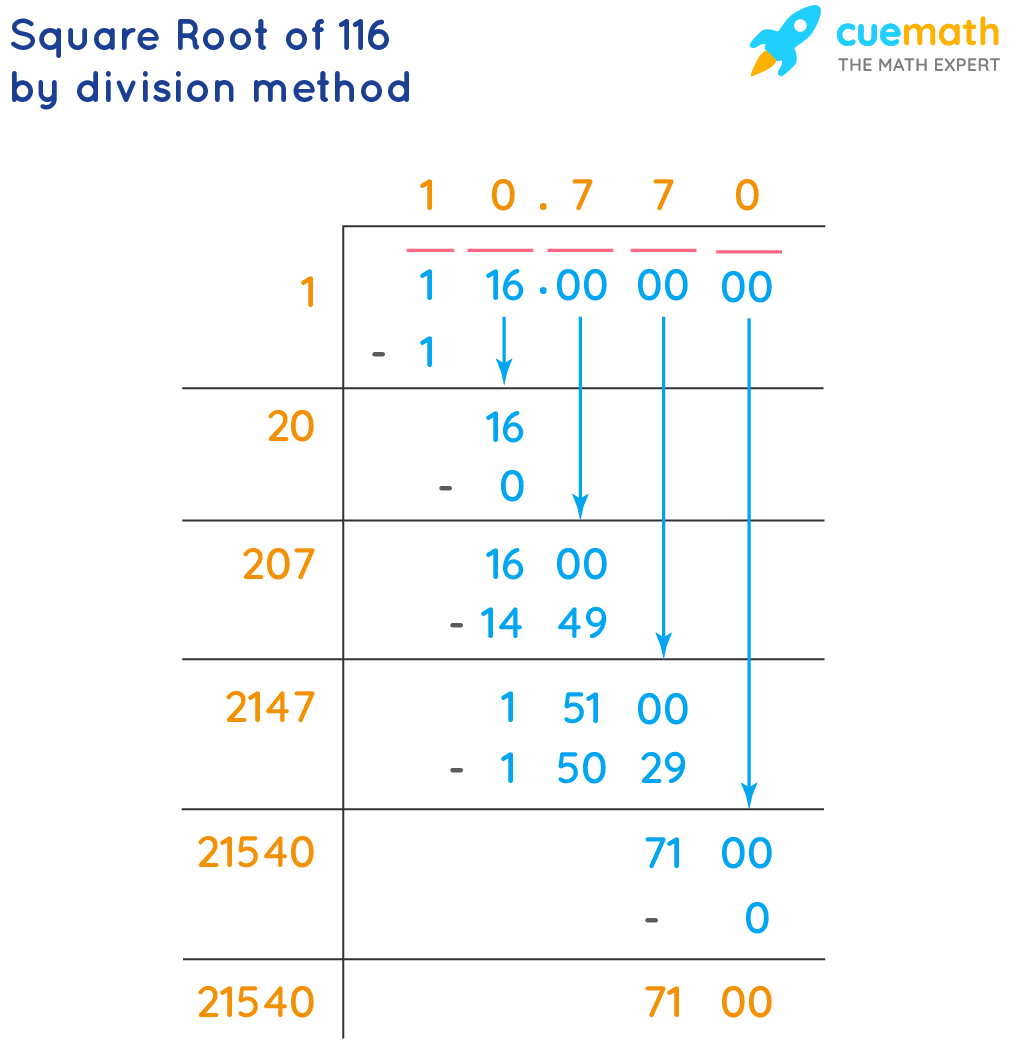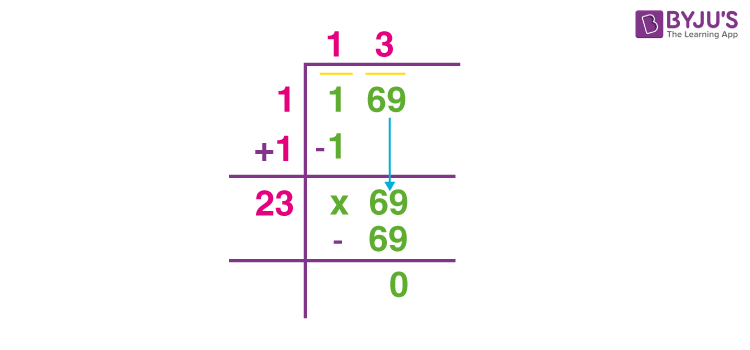Topic square root of 127: The square root of 127, approximately 11.27, is a fascinating number with various mathematical properties and applications. This article will guide you through its calculation methods, its irrational nature, and how it relates to real-world problems. Whether you're a student, educator, or math enthusiast, understanding the square root of 127 will enhance your mathematical knowledge and skills.
Table of Content
- Square Root of 127
- Introduction
- Definition and Mathematical Properties
- Calculation Methods
- Is 127 a Perfect Square?
- Rational or Irrational?
- Square Root Simplification
- Calculating with a Calculator
- Calculating with a Computer
- Square Root of 127 Rounded
- Square Root as a Fraction
- Exponent Form
- Long Division Method
- YOUTUBE:
Square Root of 127
The square root of 127 is an interesting mathematical problem that can be expressed in different forms and has various applications. Below is a detailed explanation.
Mathematical Expression
The square root of 127 is denoted as \( \sqrt{127} \) and its approximate value is:
\[
\sqrt{127} \approx 11.2694276696
\]
Properties
- Irrational Number: The square root of 127 is an irrational number because it cannot be expressed as a simple fraction.
- Non-Perfect Square: 127 is not a perfect square, hence its square root is not an integer.
Decimal Form
The square root of 127 up to ten decimal places is 11.2694276696.
Applications and Examples
- Solving Equations:
For example, solving \(x^2 - 127 = 0\) gives:
\[
x = \pm \sqrt{127} \approx \pm 11.269
\] - Geometry:
Finding the radius of a sphere with surface area \(508\pi \, \text{in}^2\) involves the square root of 127.
\[
r = \sqrt{127} \approx 11.269 \, \text{in}
\] - Area of a Square:
If the area of a square is \(127 \, \text{in}^2\), then the side length is:
\[
a = \sqrt{127} \approx 11.269 \, \text{in}
\]
Table of nth Roots of 127
| n | Value |
|---|---|
| 2 (Square Root) | \( \sqrt{127} \approx 11.269 \) |
| 3 (Cube Root) | \( \sqrt[3]{127} \approx 5.027 \) |
| 4 (Fourth Root) | \( \sqrt[4]{127} \approx 3.357 \) |
Frequently Asked Questions
- Is the square root of 127 a perfect square?
No, 127 is not a perfect square, so its square root is not an integer.
- Can the square root of 127 be simplified?
No, 127 is a prime number, so \( \sqrt{127} \) cannot be simplified further.
Conclusion
The square root of 127 is a fascinating number with applications in various mathematical problems and geometric calculations. Its approximate value is 11.269, and it is an irrational number.

READ MORE:
Introduction
The square root of 127, denoted as √127, is a mathematical expression representing a number which, when multiplied by itself, results in 127. This value is approximately 11.269, indicating it is an irrational number since it cannot be expressed as a simple fraction. The square root of 127 is useful in various mathematical calculations and problem-solving scenarios. In this article, we will explore the properties, calculation methods, and applications of the square root of 127.
- Definition and Basic Properties
- Is 127 a Perfect Square?
- Rational or Irrational Number?
- Simplifying the Square Root of 127
- Calculation Methods
- Applications in Geometry
By understanding these concepts, you will gain a deeper insight into the significance and applications of the square root of 127 in mathematics.
Definition and Mathematical Properties
The square root of 127 is a number that, when multiplied by itself, equals 127. This can be written in mathematical notation as √127. The value of √127 is approximately 11.2694276696.
Here are some important properties and steps to understand the square root of 127:
- Prime Factorization: Since 127 is a prime number, it cannot be factored into smaller prime numbers, making √127 already in its simplest form.
- Perfect Square: 127 is not a perfect square, meaning its square root is an irrational number.
- Decimal Form: The square root of 127 in decimal form is approximately 11.2694276696.
- Fraction Form: While an exact fraction for √127 does not exist, it can be approximated as 11.269/1.
- Exponential Form: √127 can be expressed using exponents as 1271/2.
To further understand the square root of 127, consider the following table showcasing various roots of 127:
| Root | Value |
|---|---|
| Square Root (²√127) | ±11.2694276696 |
| Cube Root (³√127) | 5.0265256953 |
| Fourth Root (⁴√127) | ±3.356996823 |
| Fifth Root (⁵√127) | 2.6348794128 |
These properties highlight the fundamental aspects of the square root of 127 and provide a comprehensive understanding of its mathematical significance.
Calculation Methods
There are several methods to calculate the square root of 127. These methods can be done manually or with the assistance of technology like calculators and computers. Here, we will explore some of the most common methods:
1. Long Division Method
- Set up 127 in pairs of digits from right to left and add a pair of zeros if necessary.
- Find the largest number whose square is less than or equal to 127, which is 11.
- Subtract 121 (11 squared) from 127, bringing down the next pair of zeros.
- Double the number 11 and use it as the next divisor. Find the digit to complete the new number such that the product is as close to the new dividend as possible.
- Repeat the process until you reach the desired precision.
2. Babylonian (Heron’s) Method
- Make an initial guess (e.g., 63.5).
- Divide 127 by the guess (127/63.5) and take the average of the result and the guess.
- Use the average as the new guess and repeat the process until the value stabilizes within a desired margin of error.
3. Calculator Method
Using a calculator is the simplest way to find the square root of 127:
- Type 127 and press the square root (√) button.
- The result should be approximately 11.2694.
4. Prime Factorization Method
Although 127 is a prime number and its square root cannot be simplified further, understanding the prime factorization can be useful:
- 127 is already a prime number.
- Thus, √127 remains √127.
5. Using Computer Software
Programs like Excel, Numbers, or Google Sheets can calculate square roots with the SQRT function:
- Enter
=SQRT(127)in a cell. - The result will be approximately 11.269427669585.
6. Approximation Using Fraction
While √127 is an irrational number, it can be approximated as a fraction for certain purposes:
- Using a decimal approximation: 11.27
- As a fraction: 1127/100
Is 127 a Perfect Square?
A perfect square is a number that can be expressed as the product of an integer with itself. For example, 1, 4, 9, and 16 are perfect squares because they are the squares of 1, 2, 3, and 4, respectively. To determine whether 127 is a perfect square, we need to check if there is an integer which, when multiplied by itself, equals 127.
We calculate the square root of 127 and find that it is approximately 11.269. Since 11.269 is not an integer, 127 is not a perfect square. Below are some properties related to perfect squares and the calculation of square roots:
- Perfect Squares: Numbers like 1, 4, 9, 16, 25, etc., whose square roots are integers.
- Non-Perfect Squares: Numbers like 2, 3, 5, 127, etc., whose square roots are not integers.
When we look at the properties of square roots, especially in cases of non-perfect squares, the result is often an irrational number, which cannot be expressed as a simple fraction and has a non-repeating decimal expansion.
Thus, we can conclude that 127 is not a perfect square, as its square root, approximately 11.269, is not an integer.

Rational or Irrational?
The square root of 127 is an intriguing number to analyze. To determine whether it is rational or irrational, we need to understand the properties of these types of numbers.
A rational number can be expressed as the quotient of two integers, while an irrational number cannot be represented as a simple fraction. It has non-repeating, non-terminating decimal digits.
Let's analyze the square root of 127:
- Since 127 is not a perfect square, its square root will not be an integer.
- The decimal representation of the square root of 127 is approximately 11.269427669584644.
- This decimal representation is non-terminating and non-repeating.
Given these properties, we can conclude that the square root of 127 is an irrational number.
Square Root Simplification
The square root of a number can often be simplified by factoring the number into its prime components and looking for pairs of equal factors. However, the square root of 127 cannot be simplified further because 127 is a prime number.
Here’s a step-by-step explanation of the process:
- Prime Factorization: Determine if 127 can be broken down into smaller prime factors. Since 127 is a prime number, it only has two factors: 1 and 127 itself.
- Simplification: Because 127 cannot be broken down further, its square root remains in its simplest radical form: \( \sqrt{127} \).
Therefore, the simplified form of the square root of 127 is just \( \sqrt{127} \), as it cannot be reduced any further.
Calculating with a Calculator
Calculating the square root of 127 using a calculator is a straightforward process. Here are the steps to follow:
- Turn on your calculator.
- Make sure your calculator is set to the correct mode (standard or scientific mode).
- Enter the number 127.
- Locate the square root (√) button on your calculator. This button might be labeled as "√" or "sqrt".
- Press the square root (√) button. The display will show the square root of 127.
- The result displayed will be approximately 11.2694.
To obtain more decimal places, ensure your calculator is set to display more digits. Most scientific calculators can show the square root of 127 to multiple decimal places, typically up to 10 or more. For instance, 11.2694276696 can be shown on more advanced calculators.
Here is an example of how the calculation process would look on a calculator:
| Step | Button Pressed | Display |
| 1 | Turn on the calculator | 0 |
| 2 | Enter 127 | 127 |
| 3 | Press √ button | 11.2694 |
For those using a calculator app on a smartphone or a computer, the process is similar. Open the calculator app, input 127, and then use the square root function to get the result.
Calculating with a Computer
Using a computer to calculate the square root of 127 is efficient and precise. Here are the steps to perform this calculation using different software tools:
Using Excel
- Open Excel.
- Click on a cell where you want the result to appear.
- Type the formula
=SQRT(127)and press Enter. - The cell will display the result, approximately
11.2694276696.
Using Google Sheets
- Open Google Sheets.
- Click on a cell where you want the result to appear.
- Type the formula
=SQRT(127)and press Enter. - The cell will display the result, approximately
11.2694276696.
Using Python
If you have Python installed, you can use it to calculate the square root of 127:
import math
result = math.sqrt(127)
print(result)
When you run this code, it will output 11.2694276696.
Using Online Calculators
Several online calculators can also compute the square root of 127. Simply enter "127" into the calculator's input field and select the square root function. Some popular online tools include:
- Mathway
- Omni Calculator
These tools provide instant results and often additional information about the calculation process.

Square Root of 127 Rounded
The square root of 127 is an irrational number, which means it cannot be expressed as an exact fraction and has an infinite number of decimal places. Here is how the square root of 127 is rounded to various decimal places:
- To the nearest tenth: \( \sqrt{127} \approx 11.3 \)
- To the nearest hundredth: \( \sqrt{127} \approx 11.27 \)
- To the nearest thousandth: \( \sqrt{127} \approx 11.269 \)
- To the nearest ten-thousandth: \( \sqrt{127} \approx 11.2694 \)
Rounding to more decimal places provides a more accurate approximation of the square root:
| Decimal Places | Rounded Value |
|---|---|
| 1 | 11.3 |
| 2 | 11.27 |
| 3 | 11.269 |
| 4 | 11.2694 |
By using different levels of precision, you can choose the most suitable approximation for your calculations or requirements.
Square Root as a Fraction
While the square root of 127 is an irrational number, it can be approximated by fractions for practical purposes. Here’s how you can represent it:
1. **Approximation Method**: Since the square root of 127 is approximately 11.269, we can use a fraction that closely approximates this value.
- To approximate √127, consider the fraction 11269/1000 which simplifies to about 11.269.
- Alternatively, you can use the fraction 1127/100, which is simpler and gives an approximate value of 11.27.
2. **Continued Fraction Method**: Another way to represent √127 is through continued fractions, which can provide increasingly accurate approximations:
- A continued fraction for √127 starts with 11 and then adds fractions to refine the value. For instance: 11 + 1/(2 + 1/(3 + ...)). This method offers a precise fractional approximation over iterations.
3. **Manual Approximation**: Manually, you can rationalize the denominator to create a fraction form:
- Consider the expression √127 ≈ 11.269. By rationalizing, we can form a fraction like 11269/1000, which simplifies close to the actual square root value.
These methods illustrate how to use fractions to approximate the square root of 127, useful in scenarios where a precise decimal or radical form is impractical.
Exponent Form
The square root of 127 can be expressed using exponents, which is a compact way to denote repeated multiplication. In this context, the square root of a number is the same as raising that number to the power of 1/2.
Mathematically, we can write the square root of 127 as:
- \(\sqrt{127} = 127^{\frac{1}{2}}\)
This exponent form is particularly useful in various mathematical operations and transformations, such as simplifying expressions and solving equations involving roots and powers.
To further understand the concept, consider the properties of exponents:
- When you raise a number to the power of 1/2, you are essentially finding its square root.
- Exponentiation rules such as \(a^{m \cdot n} = (a^m)^n\) and \(a^{m/n} = \sqrt[n]{a^m}\) help in simplifying and manipulating expressions involving exponents.
For example, \(127^{\frac{1}{2}}\) can also be seen in the context of fractional exponents as follows:
- Since \(127^{\frac{1}{2}} = \sqrt{127}\), this equivalence shows how exponents and roots are related.
Understanding the exponent form of the square root of 127 allows for a deeper grasp of its mathematical properties and aids in performing more complex calculations involving powers and roots.
Long Division Method
The long division method is a traditional technique used to manually calculate the square root of a number. Here is a detailed step-by-step guide on how to find the square root of 127 using the long division method:
- Pair the Digits: Begin by pairing the digits of 127 from right to left. Since 127 has three digits, we write it as 1 | 27. Add pairs of zeros for decimal places: 1 | 27 | 00 | 00.
- Initial Setup: Find the largest number whose square is less than or equal to the first pair (1). In this case, it's 1 because \(1^2 = 1\). Place 1 above the bar.
- Subtract: Subtract the square of 1 from the first pair:
- 1 - 1 = 0
- Bring Down: Bring down the next pair (27), making the new dividend 27.
- Double the Quotient: Double the quotient (1), making it 2. Place it below as the new divisor's first digit.
- Find the Next Digit: Determine the largest digit (X) such that 2X multiplied by X is less than or equal to 27. Here, X is 1:
- 21 * 1 = 21
- Subtract Again: Subtract the product from the dividend:
- 27 - 21 = 6
- Repeat: Bring down the next pair (00), making it 600. Double the current quotient (11) to get 22. Find the largest digit (Y) such that 22Y multiplied by Y is less than or equal to 600. Here, Y is 2:
- 222 * 2 = 444
- Subtract Again: Subtract the product from the new dividend:
- 600 - 444 = 156
- Continue: Bring down the next pair (00), making it 15600. Double the current quotient (112) to get 224. Find the largest digit (Z) such that 224Z multiplied by Z is less than or equal to 15600. Here, Z is 6:
- 2246 * 6 = 13476
- Final Subtraction: Subtract the product from the new dividend:
- 15600 - 13476 = 2124
Continue this process to obtain more decimal places as needed. The approximate square root of 127 using the long division method is 11.2694.

Căn Bậc Hai Của 127













